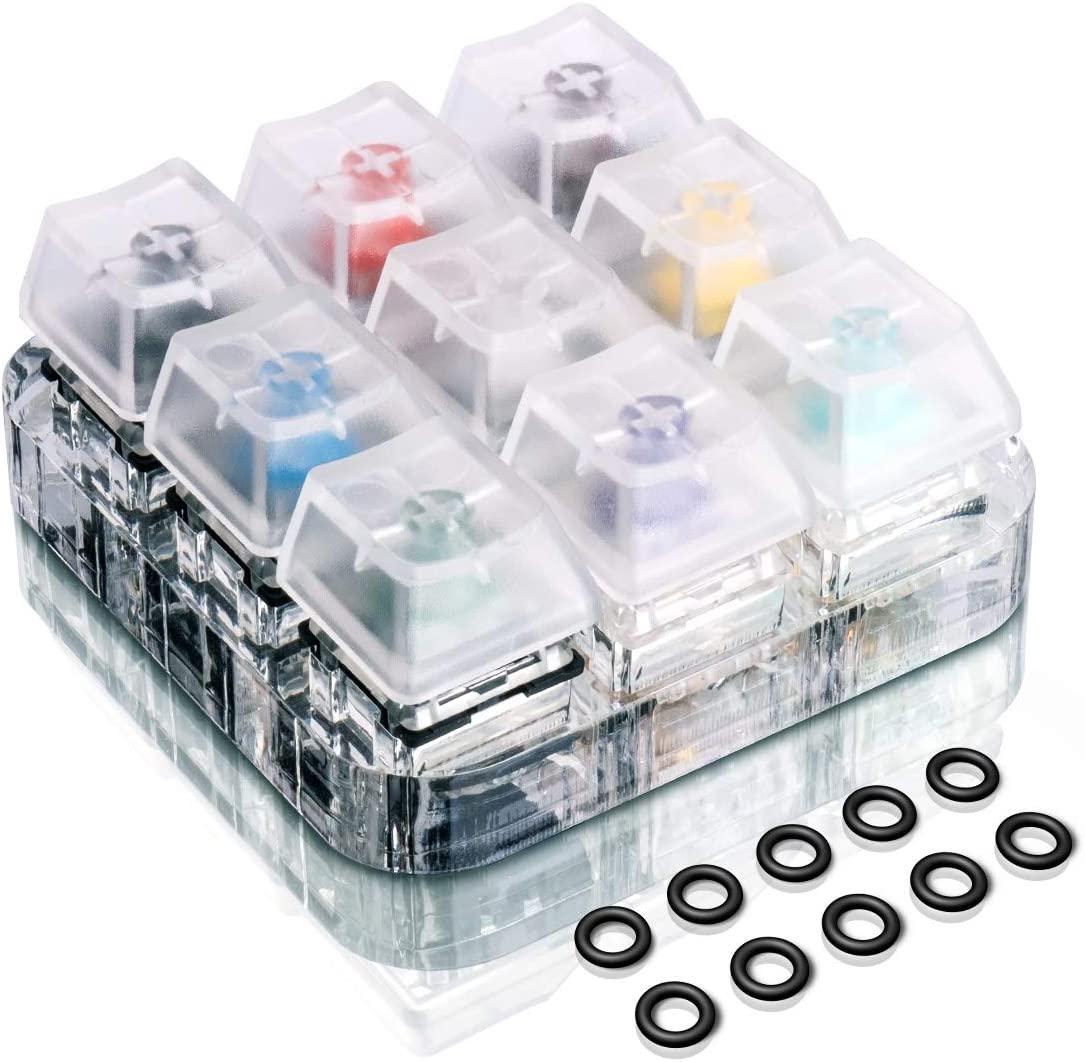Why you’re gambling when you buy switches (what to do instead)
You’ve spent days—maybe even weeks—researching mechanical switches. You’ve read all there is to read about a switch. You’ve listened to dozens of sound tests. But with all that time spent, you’re still not sure which is best for you.
Maybe you buy some switches anyway. It’s worth a gamble, right?
But based on our data, such blind buying leads to disappointment.
In this article, firstly we’ll discuss why the most commonly used ways of choosing switches are flawed. To conclude, we’ll discuss what we think is the superior way to learn and choose switches.
Reviews: too subjective or too wordy
We all know that reviews are inherently subjective. Here lies the problem. Other reviewers’ experiences won’t match yours because your taste is unique, and so are theirs.
So, if you buy what others like, you might not like it.
Unfortunately, removing this notion of subjectivity in reviews comes with its own set of problems.
One of the best reviewers out there, TheRemingoat, partly attempts to remove biases in his reviews. To do so, he offers a detailed history of each switch he reviews and quantifies its aspects. As such, his reviews are thorough and in-depth. However, there are two problems with reading long-form reviews when doing research.
For one, putting data behind everything can only tell you so much. Scoring sound and feel is subjectivity disguised as objectivity. The only exception is force graphs, but they are not interpretable by newcomers to the hobby.
In addition, sound and feel are sometimes described in comparison to other switches. This is not helpful if you do not have experience with any of the mentioned switches.
Secondly, detailing switches is wordy. TheRemingoat’s reviews come in at around 6000 words per review. For reference, a standard college paper is 1500 words or 5 pages. Although thorough, you’re reading a research paper every time you want to learn about a switch. If you’re comparing and contrasting multiple switches, you’re going to have a lot of reading to do.

To reiterate, TheRemingoat is a great and meticulous reviewer. But there is something to be said about the limitations of the medium itself that even the best reviewers cannot overcome. Phrased differently, it is incredibly difficult to effectively communicate sound and feel—the most important aspects of switches—over text.
As such, we believe reviews are not the most optimal way to purchasing great switches for you.
Reviews ultimately either do not provide us with useful information or are hard to digest.
Sound tests present themselves as an alternative, which we will look at next.
Sound tests: surprisingly inaccurate
Sound tests only focus on one dimension: sound. By default, they fail to communicate switch feel. Unfortunately, they're not great at communicating switch sounds either.
Sound tests are unreliable because they are so context dependent. Indeed, “sound tests are not indicative of real-life results” is commonly repeated among the keyboard community. The keyboard they are mounted on, the keycaps that are installed on the switches, the room that the sound test is recorded in, the equipment being used, and the audio editing process are all factors that affect a sound test’s results.
As an example, check out this timestamped sound test by 3ildcat:
Everything about the video is kept the same—except for the microphones. 3ildcat alternates between a Rode microphone and a Shure microphone. And what a difference in sound that makes!
Now, imagine that not all those factors are kept the same. Let's say we've mounted the same switches onto a different keyboard. There would be significant variance between the sound tests. This is exactly what happens when you listen to sound tests made by different people.
As such, sound tests are only good for getting a general idea of what something sounds like. But it’s not useful beyond that. Sound tests are especially flawed if you’re trying to compare the nuances in sound between switches, since there’s no reliable foundation for you to base your comparison on.
Perhaps sound tests are best for ASMR videos, less so for researching the best switch for you.
Switch testers: unjustifiably expensive
Due to the deficiencies of reviews and sound tests, many have started recommending switch testers to people. Latent in this advice is the need to try switches to really understand their sound and feel. But this is also an unsatisfactory solution.
For one, switch testers often don’t include the current options on the market, especially for more bespoke switches. They’re outdated.
Secondly, switch testers are poorly designed. No one normally mashes a key repeatedly the way switch testers have you do. Just tapping one key doesn't do much, because no one types like that.

Lastly, they’re expensive. Switch testers come in at around $20, and can cost up to $80. So, you end up buying something that is poorly designed. Then, after you buy switches, their only job is to gather dust. Spending that much money on something that you use for a few minutes is wasteful, both space-wise and financially.
The best way to choose a switch
At Milktooth, we think we’re onto a much better way to discover and buy switches.
With the deficiencies above in mind, we wanted to redesign the best way to choose a switch. We believe that you need to try switches to really get to know them, but we also thought that buying switch testers is not the right solution.
We want to let people try switches before buying them, but the entire experience had to be well-designed.
With that in mind, we designed switch tester rows so you could run all of your fingers (minus the thumbs) on them, which comes much closer to simulating a real-life typing experience.

We also stock the best switches on the market today, so there’s a superior selection for you to choose from to try.
Lastly, our try-before-you-buy option, coming in at $15, is the most cost-effective option to try switches before you buy them.
Give Milktooth’s try at-home program for mechanical switches a spin today, where you can try 10 switches at home for free before buying them. Now, you don’t have to blind-buy and gamble anymore.